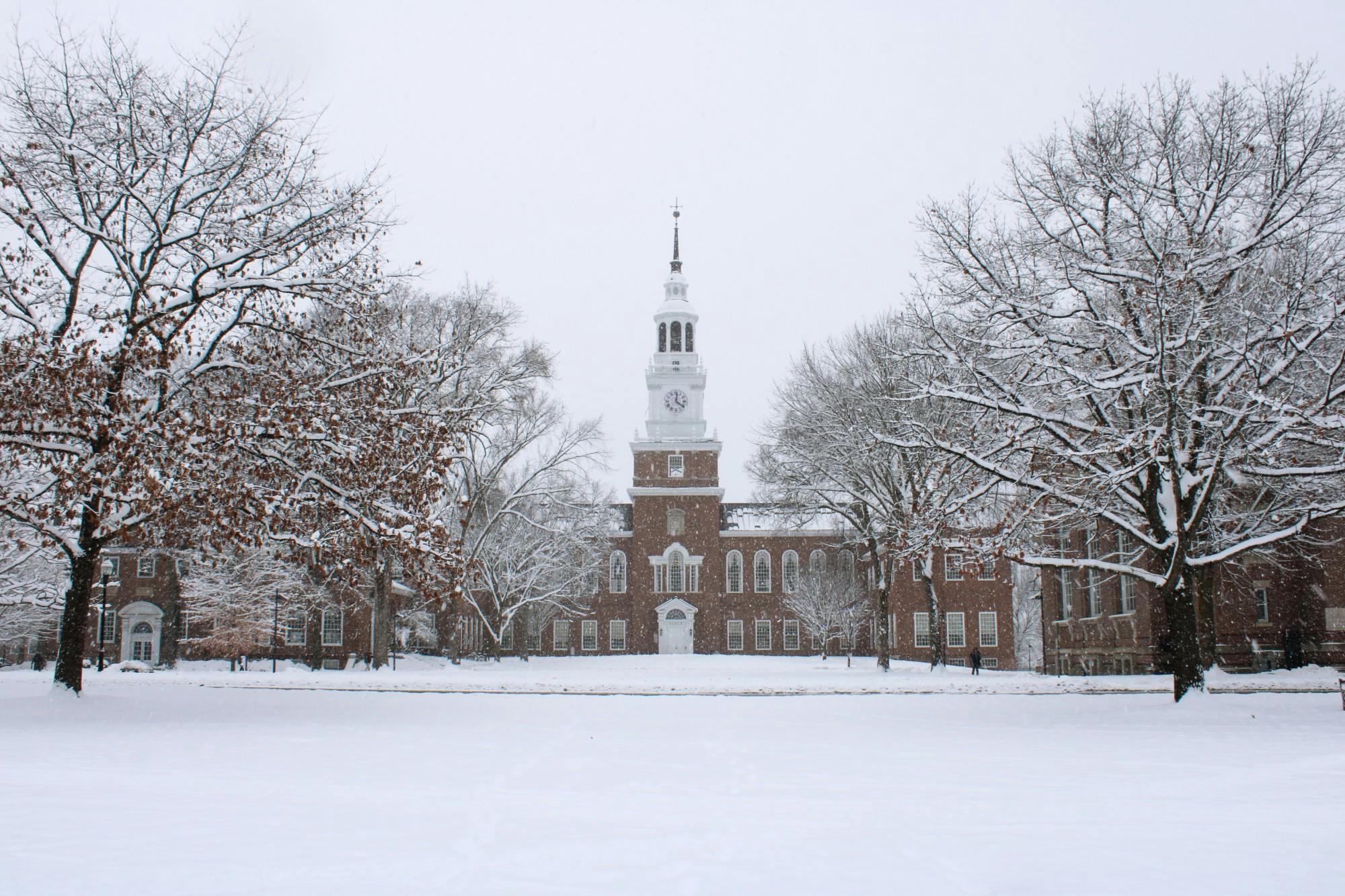This article is featured in the 2023 Winter Carnival special issue.
Erich Osterberg, associate professor of earth sciences, focuses his research on trying to understand how and why the climate has changed and identifying trends and sources of air pollution. Studying data from weather stations and climate models, his research aims to determine recent climate trends to differentiate natural cycles from human-caused changes. The Dartmouth sat down with Osterberg to discuss this year’s winter and how it compares to what we’ve seen in the past.
Could you summarize the available information on snowfall this year?
EO: We were right around average snowfall for December in Hanover. And we were well behind for January until the recent storms that we had. We may end up, snowfall wise, being pretty close to average. It’s hard to say for sure. But what’s really different about what was happening in December into the first half of January was that we had these rainstorms after the snowfall, which were on a very consistent path.
That path took the rainstorms up through the Great Lakes, as opposed to up the coastline. When that happens it’s almost impossible for us to get snow, because if you’re on the east side of the storm, you’re on the warm side of the storm — and even in the middle of winter, that’s going to bring you rain. What was interesting and surprising about it was just how consistently storm after storm took that same path. Usually, the storm paths vary from storm to storm more than they have this winter, but it’s just been a very persistent storm track that has unfortunately brought us a lot of rain.
Are these patterns that we’re seeing very regional to New England, or are they something we can also see across the U.S.?
EO: It is all related to what we’re seeing across the country. So the storm after storm after storm that was hitting California earlier this month — those are the same storms that when they made their way across the country, were going up to the Great Lakes and bringing us rain. They’re also the same storms that were dumping a lot of snow in the Rocky Mountains in Colorado.
Why is this the case?
EO: We really just don’t know this intersection between day to day weather. And overall, climate change is a really hot area of research. It’s really difficult to make those connections because the weather is so chaotic. And that’s why I think we still don’t have great answers to that question. What is the relationship between these weather patterns we see in climate change? We know that the warming that we’re seeing is caused by climate change, and that climate change is caused by human activities. As for these individual weather patterns, it’s much harder for us to say — is this climate change or is this just strange weather patterns?
Have there been more frequent or unpredictable storms this year?
EO: I don’t think we could say that. I’ll bet if you were to run the numbers, my guess is that it has been a bit on the high side in terms of the total number of storms coming through. That’s partly related to the jet stream. The jet stream is the boundary between really cold air to the north, from the Arctic, and much warmer air to the south, from the Gulf of Mexico and the Caribbean. It's this river of fast moving wind high in the atmosphere that helps to create and steer the storms. The more active the jet stream, the more storms you get. And so I think when we look back on this winter, we’re going to see that the jet stream was very active, meaning lots of storms. What we have not seen yet is those big blasts of really cold air coming down. We haven't had those negative Fahrenheit, below-zero temperatures that we normally see in January.
Do you think winters are generally getting warmer and snowfall is generally becoming more sparse?
EO: Those are the trends that we see. Snowfall and snow cover are quite different things. If the snow falls and then it stays cold for several weeks, then you’'re going to have lots of snow on the ground for a long time. If you get the same amount of snow, and then it’'s either much warmer for a few days or even rains, that snow goes away. So the snowfall doesn’'t really tell the whole story, and I think that’'s kind of what we’'re seeing this winter. Even though snowfall has been about average, it has not felt like an average winter at all because we keep losing our snow so quickly with the warm temperatures and the rain.
How do you think this impacts the Dartmouth community?
EO: I think the first is that the rain certainly affects the snowpack, and that affects the winter tourism industry. There are also going to be ecological impacts, because there’s a lot of life that lives underneath the snowpack.
It’s hard to say what the connection is with climate change. We know that the winters are warming about twice as fast as the other three seasons here in New Hampshire. It’s warmed about four degrees over the last 60 or 70 years.
When you come to Dartmouth you expect cold snowy winters, and a lot of our local culture and heritage goes along with that — primarily through winter sports, with skiing and ice skating. And so those activities have been pretty curtailed — it’s been a tough time to be a cross country skier in Hanover.
This article has been edited and condensed for length and clarity.




